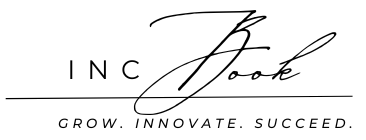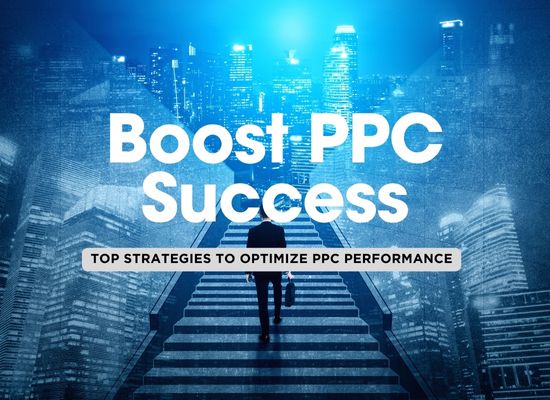Pay-per-click (PPC) advertising can be a powerful tool to drive targeted traffic, generate leads, and boost sales. However, without a solid strategy, PPC can also drain your budget quickly. By optimizing your campaigns, you can increase clicks, lower costs, and maximize your return on investment (ROI). Here are the top 8 ways to take your PPC campaigns to the next level.
Sometimes PPC campaigns can indeed, suck. But there is hope – so let’s go!
1. Refine Your Keyword Selection 🔍
Description: Selecting the right keywords is the foundation of a successful PPC campaign. Instead of focusing on broad keywords that can be too competitive or costly, hone in on long-tail keywords that are more specific to your target audience.
Why It’s Important: Specific keywords often have lower costs per click (CPC) and higher conversion rates because they target users with clear intent.
Action Step: Use tools like Google Keyword Planner or SEMrush to find relevant long-tail keywords that align closely with your product or service.
2. Optimize Your Ad Copy ✏️
Description: Crafting compelling ad copy is essential to grab attention and encourage clicks. Emphasize the unique benefits of your product or service, and include a clear call to action (CTA) to guide users.
Why It’s Important: Effective ad copy attracts more qualified traffic, which can lead to better click-through rates (CTR) and conversions.
Action Step: Test multiple versions of your ad copy to see what resonates best with your audience, focusing on benefits and a strong CTA.
3. Use Negative Keywords 🚫
Description: Negative keywords prevent your ads from showing up in irrelevant searches, saving you money by focusing on highly relevant traffic. For example, if you sell premium shoes, “cheap” could be a negative keyword to exclude.
Why It’s Important: Using negative keywords filters out unqualified clicks, helping to improve your conversion rate and stretch your ad budget further.
Action Step: Regularly review your search terms report to identify irrelevant searches and add them as negative keywords.
4. Optimize Landing Pages 🖥️
Description: Your landing page is where users end up after clicking your ad. Make sure it’s tailored to the ad’s content, loads quickly, and provides a smooth user experience with clear CTAs.
Why It’s Important: A relevant, optimized landing page improves user satisfaction, lowers bounce rates, and increases conversions, leading to a better Quality Score and potentially lower ad costs.
Action Step: Continuously test and refine landing page elements such as headlines, images, and forms to ensure they align with your ad and encourage conversions.
5. Adjust Bidding Strategies 💰
Description: Bidding strategies can greatly impact your PPC performance. Experiment with different strategies like manual bidding, target CPA (cost per acquisition), or target ROAS (return on ad spend) to find the most cost-effective option for your goals.
Why It’s Important: Optimizing bids can help control costs while achieving desired outcomes, whether that’s maximizing clicks, conversions, or impressions.
Action Step: Monitor your campaign’s performance and adjust bids based on which strategy brings the best ROI. Many platforms, like Google Ads, offer automated bidding options to help optimize results.
6. Leverage Ad Extensions 📢
Description: Ad extensions allow you to add extra information to your ad, like call buttons, location details, or additional links, which can make your ad more compelling and increase visibility.
Why It’s Important: Ad extensions improve click-through rates by providing more ways for users to interact with your ad and access relevant information.
Action Step: Use site link, call, and location extensions, and test other available options to see which extensions resonate most with your audience.
7. Implement Retargeting 🎯
Description: Retargeting allows you to reach users who previously interacted with your site but didn’t convert. Retargeting ads keep your brand top-of-mind and encourage users to return and complete desired actions.
Why It’s Important: Retargeting is a powerful way to recover lost conversions and improve ROI by targeting users who already showed interest in your products or services.
Action Step: Set up retargeting campaigns for users who visited specific pages or abandoned a cart to gently nudge them back to your site.
8. Analyze and Refine Campaigns 📊
Description: Regularly review your PPC campaigns, analyzing performance metrics like CTR, CPC, and conversion rates. Use these insights to refine your keywords, ad copy, and bidding strategies for continuous improvement.
Why It’s Important: Ongoing analysis helps you identify areas for improvement and optimize your campaign based on what’s working best.
Action Step: Schedule weekly or monthly performance reviews to make data-driven adjustments, ensuring your campaigns remain cost-effective and competitive.
By applying these strategies, you can elevate your PPC campaigns, making them more efficient, cost-effective, and results-driven.



